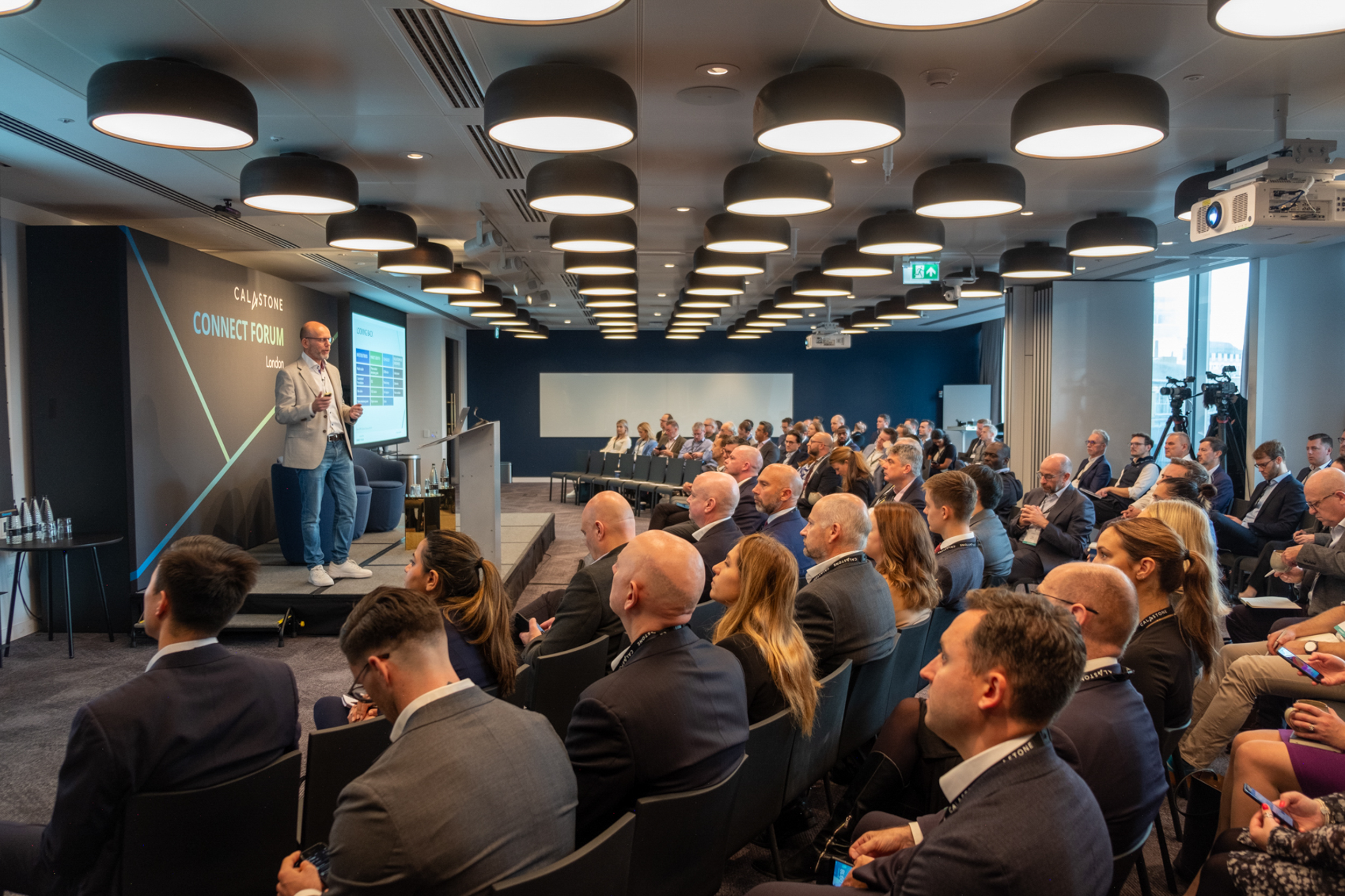Asset managers had a difficult 2022. Last year saw record fund outflows across the globe, with funds seeing the biggest fall in AuM since the global financial crisis. Combined with rising interest rates, inflationary pressures and a retraction of fiscal stimulus, it makes for a tough macro environment.
In the face of these headwinds, asset managers must look for ways to enhance their proposition and increase profitability. Mutual funds have been the vehicle of choice for 100 years, and then ETFs arrived, offering investors more choice and accessibility. Tokenisation (that is, representing the ownership of an asset, or pool of assets, as digital tokens) is the next stage in evolution. It offers asset managers a new opportunity to benefit their investors and the management of their assets.
The tokenisation (r)evolution
We’ve talked before about how we’re turning the promise of tokenisation into a reality. We are building a new way of operating: directly tokenising collectives of assets for distribution to the mass market, using our Distributed Market Infrastructure (DMI).
For investors, tokenisation can unlock a truly modern user experience: instant purchases, better transparency, and access to a broader range of assets through fractionalisation.
It also holds great potential for asset managers, facilitating new digitally native investment models and helping to defend margins. For instance, tokenisation digitalises the manual processes that exist today, end-to-end, creating a streamlined intermediary chain. This is all the more important in the current environment, where firms are looking for ways to deliver strong returns while removing friction from their operations.
The industry recognises the opportunity here, and there is a growing appetite for tokenisation and digital assets. In a recent BNY Mellon survey, every asset manager with more than $1tn AUM was interested in investing in tokenised products, and 97% of the 271 institutional investors surveyed agreed that tokenisation will revolutionise asset management and be good for the industry.
Reducing the cost of investing with tokenisation
Tokenisation, and the distributed ledger technology (DLT) that underpins it, helps automate processes like pricing and fund accountancy. It brings greater visibility, instant settlement, as well as improvements in data and analytics, saving many basis points on the management of funds. This increases the potential for alpha generation across both existing and new propositions, handing asset managers the key to reduced costs and increased margins.
At the FT Future of Asset Management conference in September, Jonathan Steinberg, Founder and CEO of fund management company WisdomTree, gave the example of a US Treasury fund from his firm using tokenisation to pass on zero management fees to the investor. ‘[It] will not have an expense ratio. It will make its money on transactions, as well as net interest income […] We’ll be keeping more of the economics, and net-net for the end customer, they will be paying less.’
Our model for tokenisation goes a step further. Rather than tweaking the mechanism of a mutual fund and the existing intermediary chain, we are building a digital marketplace where investors, investment managers, and other participants can offer products and purchase the services required to support them – all while significantly lowering the cost of investing.
Business transformation through tokenisation
Tokenisation, however, offers more than simply reducing costs. It has the power to help asset managers achieve a wider transformation mission: creating an efficient, scalable business, with a more flexible and controllable cost base.
First, tokenisation allows asset managers to expand their universe of products, without an increase in cost. With the appetite for fully digital investment products only increasing, and modern investors demanding access to a larger pool of assets, this is key.
While this would usually require a significant overhaul to an investment management system, our tokenisation model is geography, distribution channel and product agnostic – we can handle traditional mutual funds and digital assets within the same infrastructure.
This is important because institutional investors expect to mix both traditional and digital assets in their portfolio, according to BNY Mellon’s survey, with nearly three quarters of those surveyed having a strong preference for a fully integrated provider for all their digital asset needs.
What’s more, with an existing network of over 3,500+ fund managers, transfer agents, distributors, platforms, and custodians to build on, we have the operational experience to support it. Rather than a Big Bang approach to digital transformation, asset managers can set their own pace, bringing their distributors and clients with them without asking them to make major technology investments to access the new tokenised products.
Second, tokenisation, by converting both the asset and the payment associated with the asset into individual digital tokens, streamlines reconciliation and settlement. It optimises core platform operations, reducing friction and increasing liquidity. Calastone’s network and settlement functionality help achieve this.
Third, a fully digital, tokenised model simplifies and automates many fund administration workflows. This not only boosts asset managers’ margins, but also frees up their time, so they can focus on what they do best: research and execution. In addition, the immutability and transparency of data on an open ledger provides regulators and auditors with a single source of information they can request data from on demand, shortening the supervision process.
Tokenisation, then, is a powerful tool that asset managers can leverage in their cost transformation strategy. A typical mid-tier asset manager with AUM in the $500bn to $1tn range, and a total expense base of around $2bn, stands to achieve cost savings of up to 15% with such a transformation, according to a recent report from EY. Tokenisation is not the only lever, but it touches on some of the key elements in creating a leaner, more innovative business model.
A tokenised tomorrow
Tokenisation should be a core focus for all asset managers trying to build alpha now, and for tomorrow. It ensures they can continue to deliver value for their investors in the face of the current macro headwinds, and capitalise on technological advancements and shifting investor demographics – all while streamlining operations and trimming costs.
Right now, we’re working with several global asset managers to help them enable tokenisation. Where other companies are building new products in isolation, we can use all our existing connectivity and infrastructure to enable asset managers to distribute new, token-based collective investment products globally from day one.
Tokenisation is the ultimate expression of a digitised, cost-efficient investment world.





















